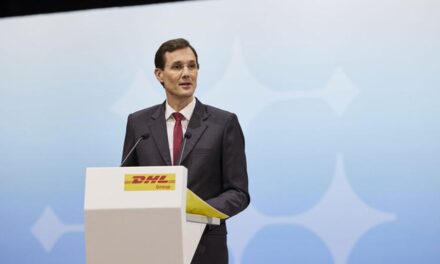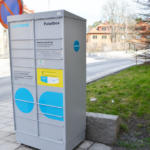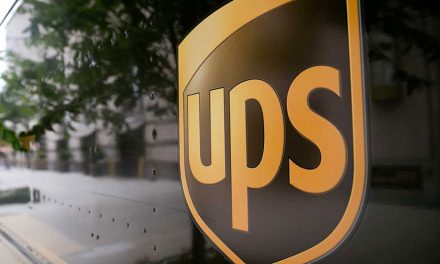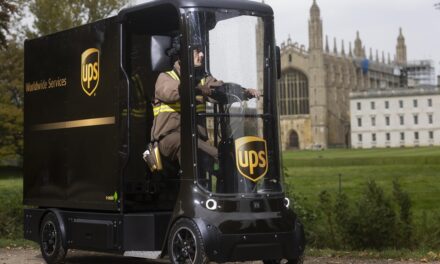
The Brown Trucks are coming! UPS Joins the Global Revolution. Interview with VP of Business Development, UPS Int
The Brown TRUCKS are coming! The Brown TRUCKS are coming! UPS Joins the Global Revolution
The only thing harder than breaking into a foreign market is staying there. UPS’s Donald Laurvick shares strategies for moving your brand across borders, exporting your company’s sales network, and bringing your own package home to new markets.
INTERVIEW with Don Laurvick,Vice President of Business Development, UPS International
by Kellie Searle
Interviews :
Integrated Marketing :
GLOBALIZATION. For all the grand images this term conjures, it doesn’t begin to describe the nuts-and-bolts issues of marketing and selling outside the United States. The greatest challenge is in the details: finding the right partners to help your sales force get in the door, building a viable infrastructure, and achieving true integration. In his 28 years with United Parcel Service (UPS; www.ups.com), Donald Laurvick, vice president of international business development (the department that includes the company’s worldwide sales divisions), has directed UPS sales efforts in Europe, the Middle East, and Africa — helping the company grow to $30 billion in annual sales.
Here, Laurvick shares his advice on selling across borders.
SAM: Tell us about the progression of your career at UPS. You started as a driver?
DL: Yes, I did. [Laughter] Many years ago.
SAM: How did you move up the chain of command?
DL: Back in the 1970s, we really didn’t have salespeople — we used to call them customer service representatives. My first management job was in eastern Washington in 1977, and I covered all of the customers in that area with both sales and service. And then it took off from there. I’ve moved nine times, all around the world. … A large part of our management committee started out as drivers, including our current CEO [James P. Kelly].
SAM: How did UPS begin the task of penetrating foreign markets?
DL: We took it in steps. At the time, Germany really didn’t have a small package market, so we thought we could carve out a niche. … We established relationships with service partners that would pick up and deliver our packages for export. … [Then we made] acquisitions in the late 1980s and early 1990s, predominantly in Europe, where we bought 16 companies. The acquisitions gave us a platform in many countries, and for a while, UPS would co-brand with the companies it bought.
SAM: So, UPS used acquired companies’ brands as a marketing launching pad. How long do you think it took before the UPS brand started to stick?
DL: We didn’t do any heavy advertising until we were very sure that we could do what we said we could do. … Television ads are tricky because it’s hard to buy a spot market in many locations in Europe. You can’t just buy a city like Paris. … You have to buy all of France.
That limited our ability to buy TV spots until we had built up the viable density we needed. … We have never wanted to promise more than what we can do. If there’s even the slightest concern that we can’t meet a commitment to a customer, we just do not make that promise.
So the infrastructure came first, then we were able to advertise based on our structure. That’s basically the ability to deliver to every address in Western Europe.
SAM: Does UPS have different taglines in different countries?
DL: In Europe and Asia, we use “Consider it done.” That’s our tagline on all of our advertisements, and it’s translated into the local languages. In the U.S., of course, it’s “Moving at the speed of business.” … Culturally speaking, the “speed of business” concept doesn’t fit well outside the U.S.
SAM: Can you talk about some of UPS’s greatest marketing triumphs in Europe or Asia?
DL: In 1996, we standardized the service offering across all of Europe, including ground, air, imports, and exports. We were the first to offer standardized service across Europe over a fully integrated network. Now, what does that have to do with sales? It allows for a uniform approach, across all of Europe, for our salespeople. So, when you’re communicating messages, whether you’re doing it verbally or in print or in a radio or television advertisement, you have virtually the same message. …
The company as a whole realized the inevitability of a consolidated Europe. So, what we saw was that companies were going to have a presence in more than one country, and what they wanted more than anything was to be able to understand that the service that they were going to be buying in Italy was the same service that they were going to be buying for their branches in France.
SAM: Infrastructure and integration are at the heart of what UPS is selling. They’re the feature … while reliability is the benefit.
DL: For most of our history, we’ve been largely an operations-based company, and all of our marketing and sales efforts stem out of the strength of our infrastructure. In 1989, when we decided to construct a global network, we realized it would be a long journey. We still have some steps in that long journey, but they’re small compared to where we’ve come from since 1989. What we have today is built and paid for on a global scale, and it puts us in an enviable position, because we know what we have and we know the people who are out there operating and living it and breathing it every day.
SAM: How do you keep things running smoothly between sales and marketing?
DL: You have to work together. There are going to be conflicts. One of the unique things at UPS is that before the IPO in 1999, we were owner-managed, so we have a stake in this business for the long term since we are still significant shareholders.
SAM: Has UPS ever gone into a new country, a new market, and just gotten it wrong?
DL: Let’s face it, UPS has been accused of being somewhat militaristic in its approach. And the military in Germany is not the kind of market for that kind of approach. At first, we operated in that environment with fairly good success because what we were bringing to the marketplace was something that they hadn’t seen before. But it couldn’t be sustained. We had to rethink our German strategy and our way of working and dealing with Germans. Salespeople really have to understand the people as well as the market.
SAM: Where do you see the biggest opportunities and why?
DL: The biggest opportunities for UPS are in Europe because of its advanced infrastructure, the density of the population and our network, and the overall economic stability. Having said that, we believe there is also a huge amount of untapped potential in both Asia and Latin America.
SAM: What advice would you give to other companies thinking about expanding overseas?
DL: The global marketplace is really the future for UPS and many other corporations. My advice would be to remain patient because results may take awhile. Be clear in your goals, and be cautious.
IN HIS OWN WORDS:
UPS’s Don Laurvick Shares Key Advice on Penetrating International Markets
1. Understand the Market
Know what your customers need, how the market operates, and what your company is trying to accomplish there.
2. Understand the People (Both Your Salespeople and the Customers)
Cultural differences are real, so determine what you can get by with and what needs to change.
3. You’re Not in the United States — Be Flexible
You have to be willing and able to accept defeat, get up the next day, and do it all over again.
4. Change What You Can — Accept the Rest
You get up, you get your teeth kicked in every day, but you can’t give up. You’ve got to drive the things that you feel are going to help your organization and be good for the customer.
5. Keep Your Ears Open
You have to be able to listen to your people — those who have grown up in those foreign markets. It’s quite possible that some of the greatest ideas out there haven’t yet been created by your company.












